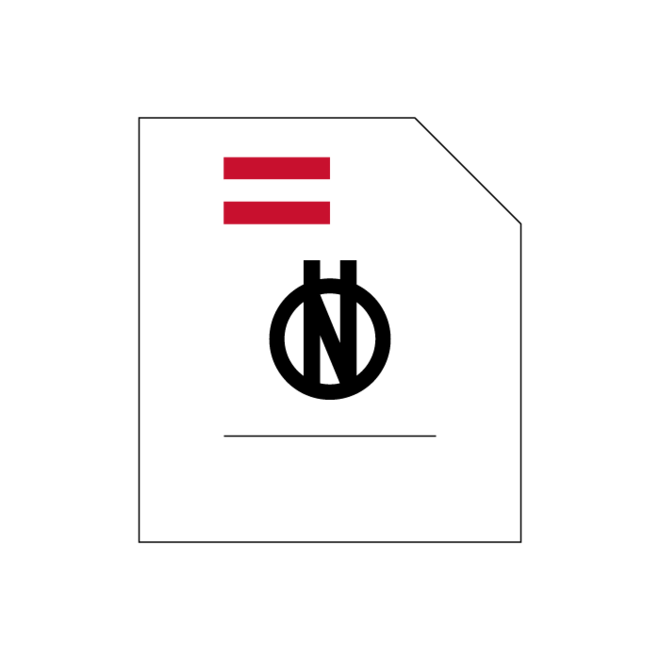Please select and order
€84.27
excl. VAT
Add to cart
Norm
ÖNORM EN ISO 7792-1
Issue date: 2004 10 01
Plastics - Thermoplastic polyester (TP) moulding and extrusion materials - Part 1: Designation system and basis for specifications (ISO 7792-1:1997)
1.1 This part of ISO 7792 establishes a system of designation for thermoplastic polyester (TP) material, which may
be used as the basis for specifications.
It covers po...
Withdrawn: 2013 03 01
Publisher:
Austrian Standards International
Format:
Digital | 18 Pages
Language:
German
| English
| Download GER/ENG
Currently valid:
Optionally co-design standards:
ICS
1.1 This part of ISO 7792 establishes a system of designation for thermoplastic polyester (TP) material, which may
be used as the basis for specifications.
It covers polyester homopolymers for moulding and extrusion based on poly(ethylene terephthalate) (PET),
poly(butylene terephthalate) (PBT), poly(cyclohexylenedimethylene terephthalate) (PCT), poly(ethylene
naphthalate) (PEN) and other TP-types and copolyesters of various compositions for moulding and extrusion.
1.2 The types of thermoplastic polyester are differentiated from each other by a classification system based on
appropriate levels of the designatory properties:
a) viscosity number
b) tensile modulus of elasticity
and on information about the intended application and/or method of processing, important properties, additives,
colorants, fillers and reinforcing materials.
1.3 This part of ISO 7792 is applicable to thermoplastic polyester homopolymers and copolymers.
It applies to materials ready for normal use in the form of powder, granules or pellets, unmodified or modified by
colorants, additives, fillers, etc.
This part of ISO 7792 does not apply to the saturated polyester/ester and polyether/ester thermoplastic elastomers
covered by ISO 14910.
1.4 It is not intended to imply that materials having the same designation give necessarily the same performance.
This part of ISO 7792 does not provide engineering data, performance data or data on processing conditions which
may be required to specify a material for a particular application and/or method of processing.
If such additional properties are required, they shall be determined in accordance with the test methods specified in
part 2 of this International Standard, if suitable.
1.5 In order to specify a thermoplastic polyester material for a particular application or to ensure reproducible
processing, additional requirements may be given in data block 5.
ÖNORM EN ISO 20028-1
2020 01 15
Plastics - Thermoplastic polyester (TP) moulding and extrusion materials - Part 1: Designation syste...
Norm
ÖNORM EN ISO 20028-1
2017 09 15
Plastics - Thermoplastic polyester (TP) moulding and extrusion materials - Part 1: Designation syste...
Norm
ÖNORM EN ISO 7792-1
2013 03 01
Plastics - Thermoplastic polyester (TP) moulding and extrusion materials - Part 1: Designation syste...
Norm
ÖNORM EN ISO 7792-1
2004 10 01
Plastics - Thermoplastic polyester (TP) moulding and extrusion materials - Part 1: Designation syste...
Norm
↖
Norm
Issue date :
1998 03 05
Plastics — Determination of the viscosity of polymers in dilute solution using capillary viscometers — Part 5: Thermoplastic polyester (TP) homopolymers and copolymers
Norm
Issue date :
1997 02 27
Plastics — Symbols and abbreviated terms — Part 1: Basic polymers and their special characteristics
Norm
Issue date :
1988 10 13
Plastics — Symbols — Part 2: Fillers and reinforcing materials
Norm
Issue date :
1998 03 05
Plastics — Determination of the viscosity of polymers in dilute solution using capillary viscometers — Part 5: Thermoplastic polyester (TP) homopolymers and copolymers
Norm
Issue date :
1992 02 19
Plastics — Polyamide (PA) moulding and extrusion materials — Part 1: Designation
Norm
Issue date :
2013 03 01
Plastics - Thermoplastic polyester (TP) moulding and extrusion materials - Part 1: Designation system and basis for specifications (ISO 7792-1:2012)
Norm
Issue date :
1997 12 18
Plastics — Thermoplastic polyester (TP) moulding and extrusion materials — Part 1: Designation system and basis for specifications




